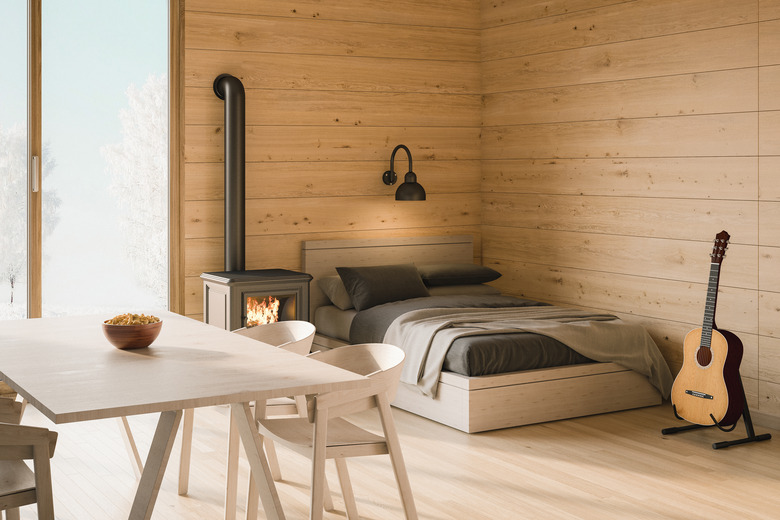How To Clean Or Finish An Old Pine Wood Floor
Pine flooring is often characterized as hardwood flooring, but it isn't. Pine is a softwood, and depending on the species, it has a hardness well below that of hardwoods and even some other softwoods. This means that pine dents easily, and the older a pine floor is, the more damage it sustains.
This isn't exactly a drawback. A distressed pine floor has charm, and many people artificially distress a new pine floor to make it look old. On the other hand, a flawless pine floor is also a thing of beauty, and if that's your cup of tea, it's relatively easy to have it. Sanding pine floors is easier than sanding hardwood, although because pine wears down so quickly under a sander, there's a limit to how often you can do it.
The Best Way to Clean Hardwood Floors
The Best Way to Clean Hardwood Floors
Pine isn't a hardwood, but a pine floor needs the same care as a hardwood floor. If you want to keep the finish flawless, you need to regularly sweep up or vacuum dirt particles that can get ground into the surface by shoes. "Regularly" means four to six times a year. Clean up wet and sticky spills as soon as they happen.
When the finish gets scuffed or dull, don't try to bring it back with Murphy's oil soap or wax. These products leave a residue that can itself turn dull, and at some point, you may have to remove them, which is a job you don't want to do. Instead, use a damp — not wet — mop and a hardwood floor cleaner or a pinewood floor cleaner.
Mop along the grain, spraying the floor cleaner from a spray bottle where needed. Easy does it on the cleaner; you don't want it to seep between the floorboards where it can cause swelling and warping. The same goes for water from your mop. Don't let it stand on the floor; wipe it off before you end your cleaning session.
Restore the Finish With a Screen and Recoat
Restore the Finish With a Screen and Recoat
When your pine floor looks the worse for wear, it's usually the finish that's responsible, and there's an easy way to restore the finish without sanding. The process involves a floor buffer and a sanding screen, so it's called a screen and recoat.
Rent a floor buffer from a rental outlet and grab one or two 120-grit sanding screens, which they will also sell you. Give the floor a thorough mopping, let it dry, then run the buffer over the floor to scuff up the existing finish. Tack up the dust and apply a refresher coat of polyurethane floor finish.
You can also restore the floor by using a chemical etcher in place of the sanding screen. The etcher and finish come together in a floor restoration kit you can buy at any hardware store. This process doesn't give results as good as a screen and recoat, but it's easier and takes less time, so you can do it more often.
So You Want to Make Your Old Floor Look New?
So You Want to Make Your Old Floor Look New?
If by some chance you should tire of the weathered appearance of your old pine floor, you can sand it just as you would a hardwood floor. The softness of pine will be an advantage, and a flight grit on your floor sander – 100- or 120-grit – will quickly wear off the surface and remove surface blemishes. You'll have to clean the wax and oil soap off the floor before you sand or they'll gum up the sandpaper, which is one reason why you shouldn't use these products.
Once you're satisfied with the sanding job, stain the floor, if you like, and apply at least two coats of standard polyurethane floor finish.
